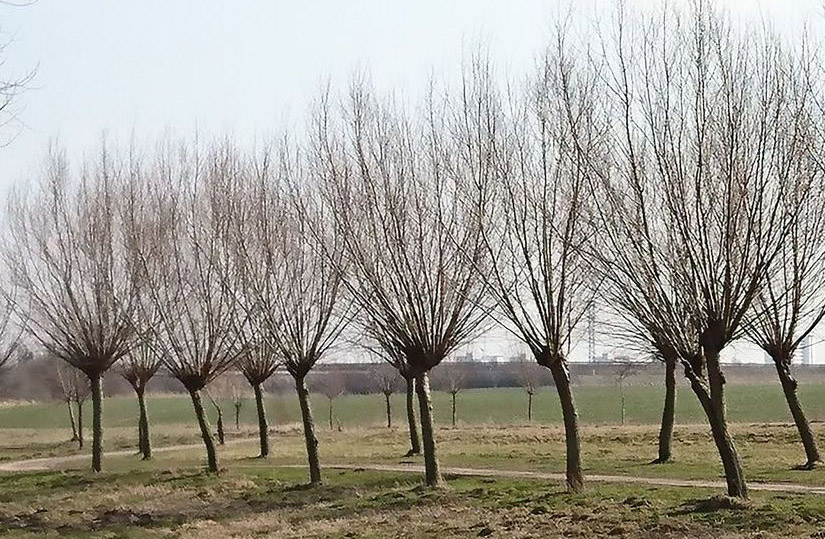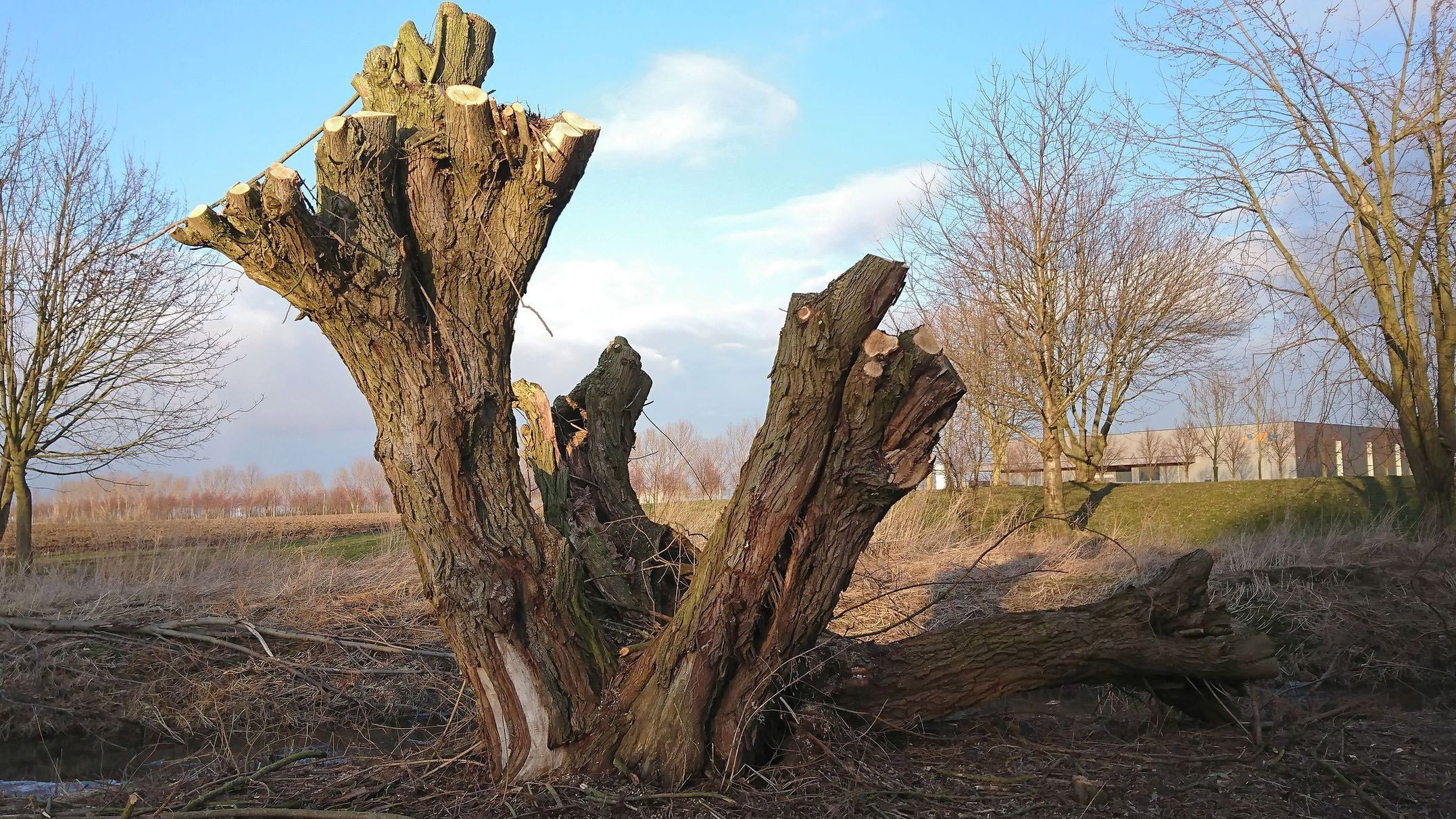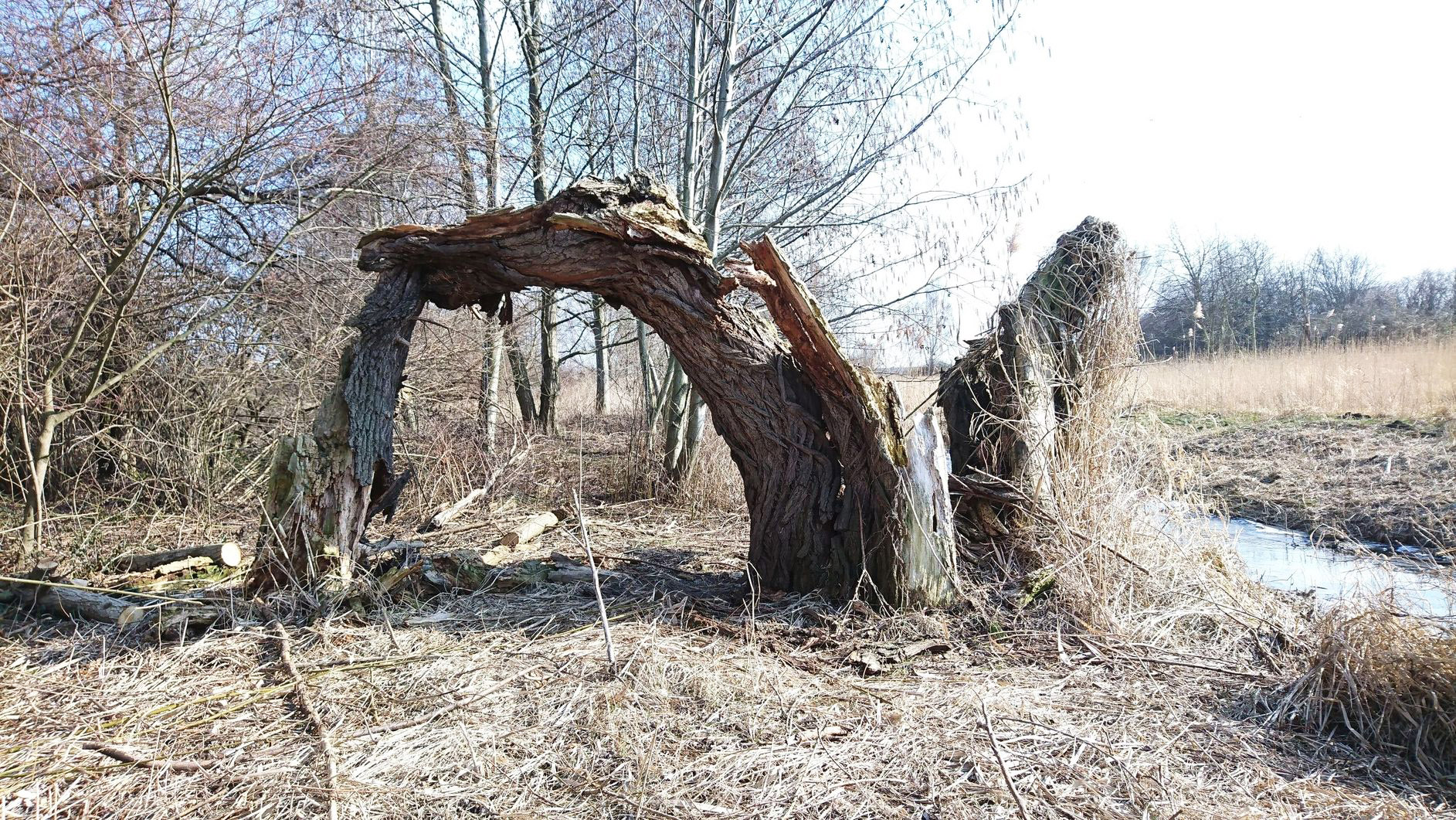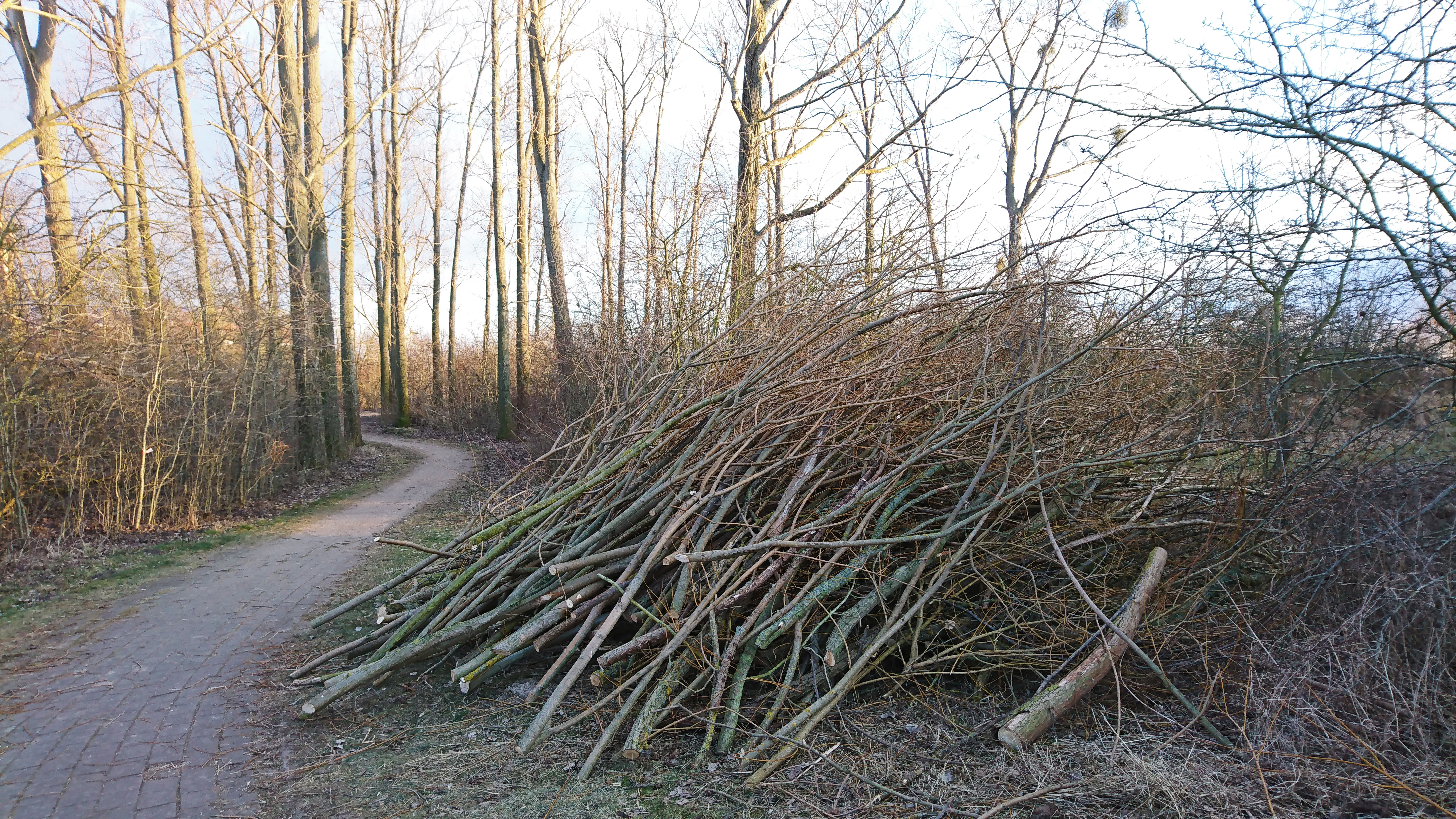
Pollarded Willow Trees
Care of the oldest trees in the TPO
In many areas, pollarded willow trees have probably been present in human settlements and ancient cultural landscapes for over 3,000 years. Nowadays we find them only in a few places as remnants from the time before the industrialization of agriculture. Also in the Ostfalen Technology Park we can still discover some old pollarded willow trees. They are the oldest existing trees here.
Pollarded willow trees are usually on waters edges or roadsides. In the Ostfalen Technology Park there are old pollarded willow trees at the Telzgraben creek north of the quarry lake and on the bike path in extension of Olvenstedter Weg west of the B189.
Apart from this row pollarded willow trees and few large naturally grown white willows, there were no trees between the B189 and the Ebendorfer Chaussee before the establishment of the Ostfalen Technology Park. It was typical of many villages in the Boerde and elsewhere that the pollarded willow trees were the only trees in the field.

Between the old row of pollarded willow trees on the Olvenstedter Weg and the bridge of the B189 over the Kleine Sülze creek, armstrong willow branches were put into the ground along the cycle path in 2011 and they were supplied with plenty of water for a year.
In the meantime, stately young trees have already developed from these so-called setting poles. These too are cut as pollard willows.

The unique form of pollarded willow trees was created by man alone and can only be obtained by him. Once a tree has been pollarded, this cut must be consistently continued. In this trimming the trunk is cut off in about two meters height. Depending on what the trimmed branches and willow branches are used for, this must happen every 1-3, and every 10 years at the latest.
 If this does not happen, the pollarded willow trees can collapse under the weight of their branches. This is furthered by the factor that many willows become hollow in old age.
If this does not happen, the pollarded willow trees can collapse under the weight of their branches. This is furthered by the factor that many willows become hollow in old age.
Through the injured areas that arise when cutting the trees, fungal spores and water can penetrate into the wood of the trunk. This rots, creating cavities and thus valuable habitats for various birds, mammals and insects.
In the past, pollarded willow trees used to appear everywhere in the landscape. In modern times, they have lost much importance. Baskets or fences made of willow branches are hardly needed anymore. Even as firewood, the wood of the pastures is no longer in demand today. Tipis made of willow branches for natural playgrounds, on the other hand, are becoming increasingly popular.
Since the care of the pollarded willow trees seems useless to most property owners, they disappear more and more. Often they are only maintained by nature conservation organizations, such as the NABU. The conservation of old trees is important for many species of animals as food and shelter. The care of pollarded willow trees is a contribution to the conservation of biodiversity in our cultural landscape.
 Often the branches of the pollarded willow trees are also used as feed for the elephants and rhinos in the Magdeburg Zoo. NABU Barleben has regularly supplied the zoo with willow rods for many years. If you also have a need for willow rods, do not hesitate to contact us!
Often the branches of the pollarded willow trees are also used as feed for the elephants and rhinos in the Magdeburg Zoo. NABU Barleben has regularly supplied the zoo with willow rods for many years. If you also have a need for willow rods, do not hesitate to contact us!
Text and images: Michelle Kirst, Federal Volunteer